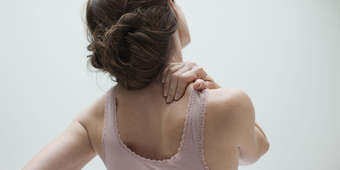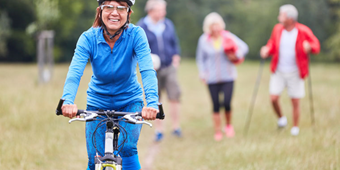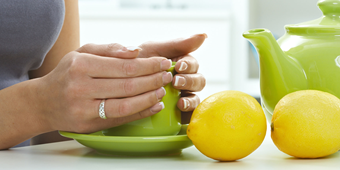You Knead To Relax
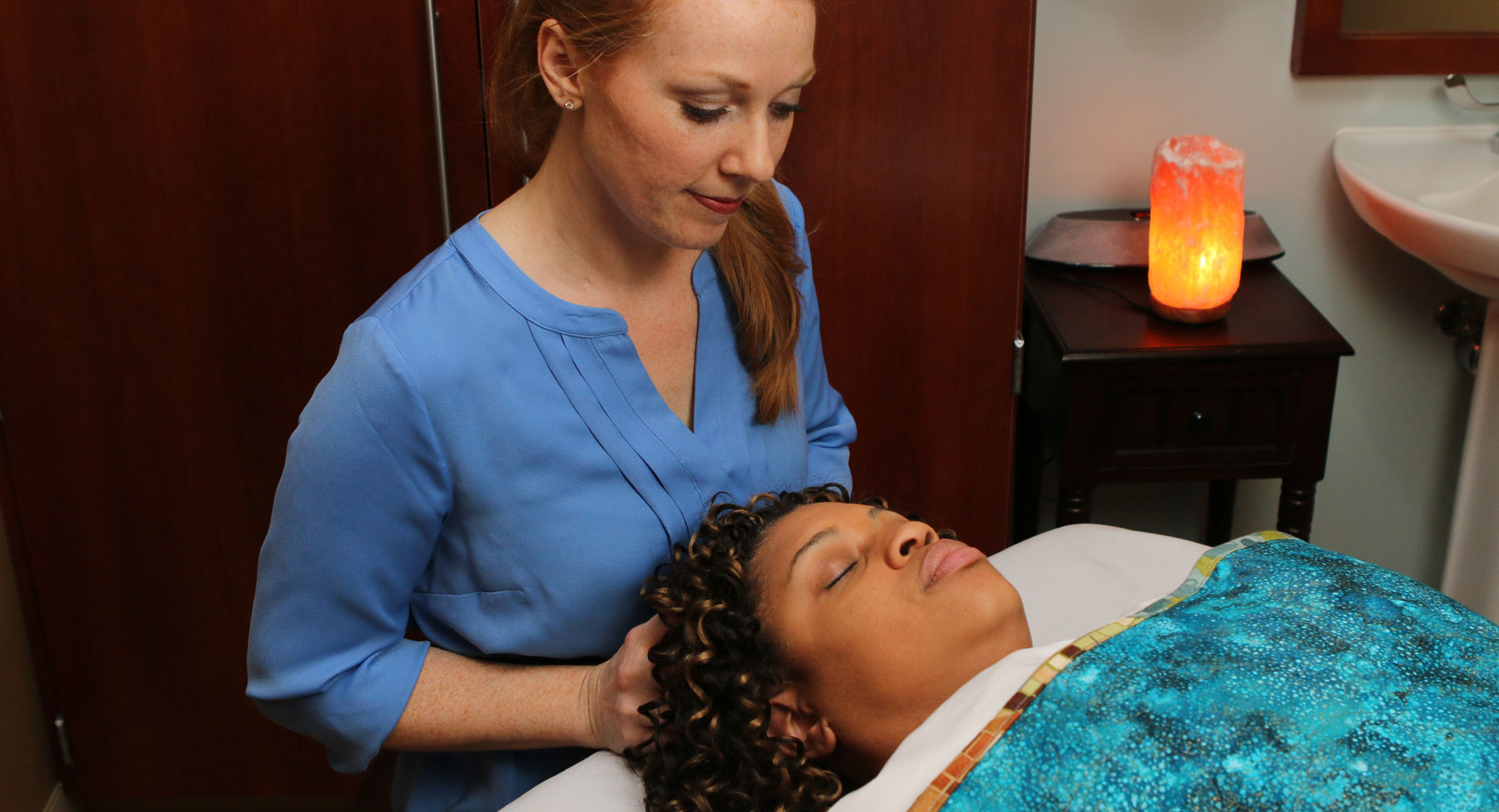
Find Your Perfect Match
Answer a few questions and we'll provide you with a list of primary care providers that best fit your needs.
If you’re living with back or joint pain, massage may provide pain relief and help to reduce your stress.
The art of manipulating muscles and soft tissues releases tension, stimulates the nerves and increases blood flow. Massage delivers emotional benefits too, by releasing “feel good” endorphins in the brain.
The body’s biologic response to massage reduces pain, aids healing and eases depression and anxiety. These benefits are especially important if you’re managing chronic back, neck and joint pain caused by arthritis.
Reduce Pain, Ease Tension
Massage is a complementary therapy that works with treatments prescribed by your doctor for an injury or for managing osteoarthritis pain or osteoporosis.
Recent research finds that massage benefits the body in many ways, including:
- Increased blood flow and circulation. When muscles are rubbed and manipulated, the blood carries more nutrition and oxygen to muscles and tissues, helping them bounce back from soreness or injury.
- Decreased tension. Massage relaxes muscles, which improves flexibility, reduces pain and may even improve sleep.
- Increased endorphin levels. Endorphins are mood-enhancing chemicals that make you feel good and increase your ability to manage chronic pain.
- Stimulated nerves. The pressure of massage stimulates nerves under the skin that send pain-reducing signals to the brain. This can lead to reduced pain symptoms.
Massage also works to encourage the release of hormones that regulate key vital signs, including blood pressure and heart rate.
Conditions That Improve With Massage
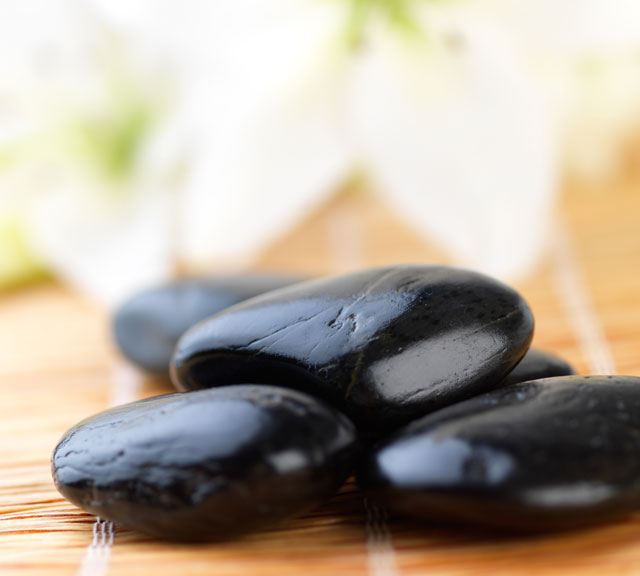
Studies conducted by the Touch Research Institute at the University of Miami find the regular use of massage decreases pain for many people with back, neck and joint pain, with or without arthritis symptoms. Many patients enjoy lower pain levels for six months after their treatments.
Several scientific studies show that massage also can improve:
- Low back pain
- Muscle spasms
- Back and neck pain
- Arthritis pain
- Carpal tunnel syndrome
In addition, massage reduces stress that comes from living with arthritis pain, which in turn makes it easier to manage the discomfort.
The body’s biologic response to massage reduces pain, aids healing and eases depression and anxiety.
Types of Massage
There are many different kinds of massage therapy. You can work to heal yourself by kneading and rubbing your own muscles or using tennis balls to help add pressure. Swedish massage is often used to improve circulation and relaxation. Neuromuscular massage can help with specific pain points.
Before you try massage, talk with your doctor about the best massage treatment for your specific condition and type of pain. Some forms of more intense massage may increase pain in people with certain disorders.
Some of the better known options include:
- Swedish massage. The most common type of massage uses long strokes, kneading, tapping and friction of muscles and tissues to reduce soreness, increase circulation and decrease anxiety.
- Deep tissue massage. Strong, focused pressure targets the top and deep muscle layers to reduce severe pain in the muscles and connective tissue. It may not be the right choice if you have arthritis.
- Shiatsu. This kind of massage originated in Japan and uses constant, rhythmic motions of the fingers and palms to apply pressure to a specific area of the body.
- Trigger point (neuromuscular) massage. Trigger points are spots in the muscles where knots can form. Applying pressure to these specific spots can relieve pain and relax the muscles. Some forms of trigger point massage use injections of numbing agents like lidocaine to reduce pain. Any injections should only be performed in a doctor’s office.
- Myofascial release. By stimulating the connective tissue (fascia) that surrounds muscles, blood vessels and nerves, a therapist attempts to relieve pain. The connective tissue is stretched and released by rolling the skin back and forth on the back, legs or other areas.
- Rolfing. Similar to myofascial release, rolfing practitioners use “structural integration.” They move the body into certain positions and manipulate the connective tissues. Rolfing is designed to promote pain relief and relaxation and to restore posture and range of motion.
Additional forms of massage include:
- Thai massage. This type of therapy combines yoga-like poses with massage. The treatment can focus on flexibility or targeting muscles and joints with pressure.
- Ayurvedic massage. Part of the Indian natural healing philosophy, this form of massage includes a full body massage and scented oils believed to have spiritual healing properties.
- Hot stone massage. Often offered in day spas, this therapy involves kneading the muscles by hand and also placing smooth, heated stones on your back to heat and relax the muscles and tissues and relieve tension.
- Anma. This Japanese technique kneads the muscles and tissues to restore proper energy flow in the body.
- Lomi lomi. This Hawaiian healing practice combines diet, meditation and prayer with massage.
- Reflexology. This Asian therapy works under the belief that pressure on one part of the hands or feet can promote healing in other areas of the body. It is designed to provide pain and stress relief.
Find Your Perfect Match
Answer a few questions and we'll provide you with a list of primary care providers that best fit your needs.
Source: Spine Health; Arthritis Foundation; Touch Research Institute at the University of Miami


